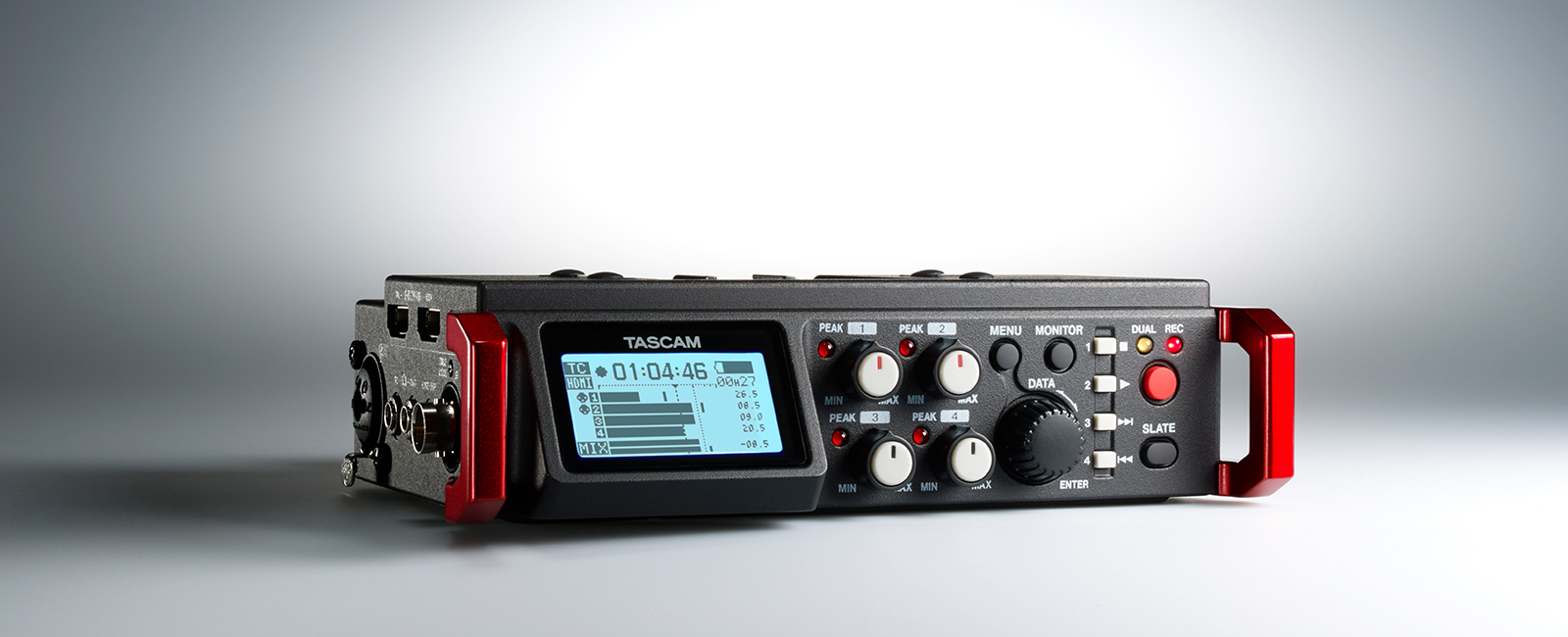 Nashville, TN—December 2016… Given his more than 25 years as a professional drummer and percussionist, it’s not hard to guess the types of videos Chris Beals produces. “My video work ranges from electronic press kits to product demonstrations to videos for artists in development and music videos on a budget. I shoot showcases, live performances, video for companies that manage bands, and so on.”
Nashville, TN—December 2016… Given his more than 25 years as a professional drummer and percussionist, it’s not hard to guess the types of videos Chris Beals produces. “My video work ranges from electronic press kits to product demonstrations to videos for artists in development and music videos on a budget. I shoot showcases, live performances, video for companies that manage bands, and so on.”
For years, Beals relied on TASCAM’s DR-60D 4-channel portable audio recorder, designed exclusively for filmmakers. He still loves his DR-60D but when he discovered the new TASCAM DR-701D linear PCM recorder/mixer for video production, he made the leap.
“The HDDA mic preamps in the newer TASCAM gear were one reason I wanted to get into the DR-701D but it’s a lot more than that,” Beals professes. “I like having the two integrated omni condenser mics, as well as the four inputs for shotgun and other mics. The built-in SMPTE timecode generator and slate tone generator also were of interest to me. There are a lot of smart features for videographers; TASCAM did their homework and thought a lot about what people like me need. It’s fantastic to be able to achieve such high sound quality in the field and still have all the right features.”
 Recently, Beals has been shooting a series of artist showcases at Opry Mills Mall, a Nashville property of Simon Malls. “Simon Malls is a global company with malls all over the place,” expounds Beal. “They’re testing these artist showcases, and Opry Mills Mall is a test site. They plan to copy what we’re doing here and duplicate it in other places. Often a sound company records the showcase but I need to be self-sufficient for times where they aren’t available. With the TASCAM DR-701D, I can ask the front-of-house sound person for 2-4 channels of audio, without a front-of-house sound person, record those at a level that is sufficient and also one at 12dB reduction to play it safe for post mixing, and handle the gig. I use the built-in mics for crowd response and post-mix that with a two-track recording of the performance. The DR-701D lets you record up to four external mics and has a mid-side decoder. For most smaller gigs, that’s more than enough.”
Recently, Beals has been shooting a series of artist showcases at Opry Mills Mall, a Nashville property of Simon Malls. “Simon Malls is a global company with malls all over the place,” expounds Beal. “They’re testing these artist showcases, and Opry Mills Mall is a test site. They plan to copy what we’re doing here and duplicate it in other places. Often a sound company records the showcase but I need to be self-sufficient for times where they aren’t available. With the TASCAM DR-701D, I can ask the front-of-house sound person for 2-4 channels of audio, without a front-of-house sound person, record those at a level that is sufficient and also one at 12dB reduction to play it safe for post mixing, and handle the gig. I use the built-in mics for crowd response and post-mix that with a two-track recording of the performance. The DR-701D lets you record up to four external mics and has a mid-side decoder. For most smaller gigs, that’s more than enough.”
Beals employs a portable jib crane for the showcases, and he takes an HDMI feed from the camera on the jib and runs it to his DR-701D. “At first, I thought I’d have to find a way to split the camera’s HDMI signal so I could run one signal to my video monitor and another to the recorder,” he recalls. “But the DR-701D has a second HDMI port. You can use it to cascade multiple DR-701Ds or, as I’m doing, to pass the signal through to my video monitor so I don’t need an HDMI splitter. Now that is convenient!”
 Professional field recorders are notorious for devouring batteries, so Beals was concerned about running out of juice at a bad time. “Rechargeable AA batteries are a good idea,” he confirms. “But even without them, I won’t get stuck because when my batteries start fading, I simply power the recorder from a mobile battery pack with a Micro-B USB port. TASCAM offers a mobile battery but I already had one for my cell phone that works great with the DR-701D. You can also get an optional AC adapter. So I don’t worry about running out of battery power in the middle of a shoot.”
Professional field recorders are notorious for devouring batteries, so Beals was concerned about running out of juice at a bad time. “Rechargeable AA batteries are a good idea,” he confirms. “But even without them, I won’t get stuck because when my batteries start fading, I simply power the recorder from a mobile battery pack with a Micro-B USB port. TASCAM offers a mobile battery but I already had one for my cell phone that works great with the DR-701D. You can also get an optional AC adapter. So I don’t worry about running out of battery power in the middle of a shoot.”
Although the features and sound quality were the main attractions, size is important, too. “All of my video gear can fly cross country,” Beals observes. “The portable jibs go in bags, and the cameras fit in a trumpet case. The DR-701D is compact, and it only weighs about a pound and a quarter without the batteries. It’s built tough for field work, too. So traveling with it is easy. I did a lot of good work with my TASCAM DR-60D but now that I have the DR-701D, I’m using the DR-60D to record my band shows from my in-ear-monitor mix. TASCAM has me covered in BOTH arenas!”






![[Updated] Information regarding macOS Tahoe compatibility](/images/products/_tmp/learn/thumbnail/macos_tahoe.jpg)

